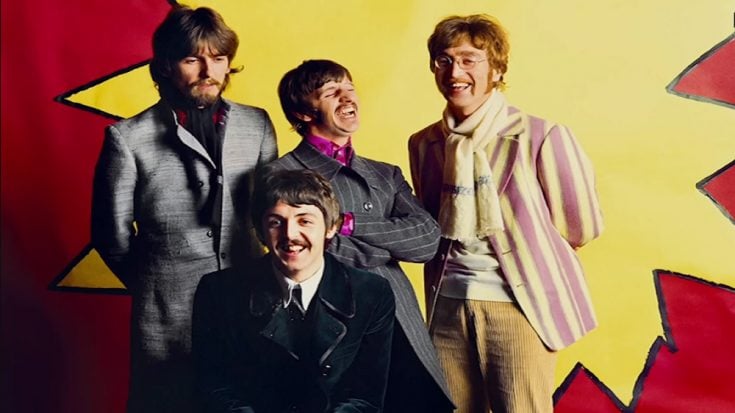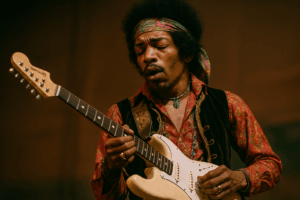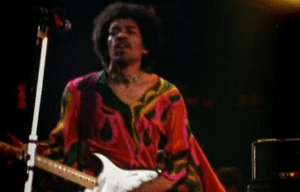Why The Beatles’ “Let It Be” Documentary Disappeared For 50 Years

via Music Box USA / YouTube
This legendary group’s influence spans generations, touching the hearts and souls of many. Amid their treasure trove of music and memories, there lies a piece that remained hidden from public view for over half a century – the “Let It Be” documentary. This piece seeks to unravel the mystery behind its disappearance and shed light on its eventual re-emergence.
The Anticipated Reveal
In April of 2024, Walt Disney Studios ignited a wave of speculation and excitement among The Beatles’ fans worldwide. By posting a cryptic image of four white squares, reminiscent of the individual portraits found on “Let It Be’s” album cover, they hinted at something big. This was not just any announcement but one that concerned the iconic 1960s band The Beatles, sparking discussions and guesses across social media platforms. The speculation was soon confirmed when Disney+ announced the re-release of the long-lost “Let It Be” documentary, scheduled to air on May 8, 2024. This rare documentary, filmed around the album’s creation, had been unseen by the public since its initial release following the band’s breakup in 1970.
Disney+’s partnership with The Beatles had already proven fruitful with the release of “The Beatles: Get Back” in 2021. This three-part docuseries, made from remastered footage collected during “Let It Be’s” filming, was a commercial success. However, this success starkly contrasted the original documentary’s reception. Initially released more than 50 years ago, the original “Let It Be” documentary was neither a critical nor a commercial hit. It disappeared from public view until now, leaving fans wondering about the long hiatus.
Creativity, Conflict, and the “Let It Be” Documentary
The Beatles’ story is one of meteoric rise, unparalleled creativity, and eventual discord. From their early days, their music broke new ground, pushing the boundaries of what pop music could be. Albums like “Sgt. Pepper’s Lonely Hearts Club Band” and “The Beatles” (The White Album) were hailed as masterpieces. However, the loss of their manager, Brian Epstein, in 1967 marked a turning point. Recording sessions grew tense, and the band’s unity began to fray. In an attempt to return to their roots, Paul McCartney envisioned the “Get Back” project, culminating in the album and documentary later known as “Let It Be.” However, by the time of its release, The Beatles had parted ways, leaving the documentary as a somber footnote to their storied career.
The documentary itself did not fare well upon release. Circulating among fans were discussions about its raw portrayal of The Beatles’ fracturing relationship, which contrasted sharply with their beloved public image. Critics were unkind, with some calling it a boring failure that did little but showcase the band’s disintegration. None of The Beatles attended its premiere, indicating their own dissatisfaction. The documentary was seen by many as an uncomfortable glimpse into the band’s final days, highlighting the personal conflicts and creative disagreements that preceded their breakup.
The Long Road to “Let It Be’s” Revival
As years went by, the documentary’s absence became more pronounced. Despite periodic announcements hinting at a potential re-release, the film remained shelved. Concerns over its impact on The Beatles’ legacy appeared to outweigh the historical interest in the documentary. It wasn’t until the release of “The Beatles: Get Back” that the tide began to turn. This newer documentary’s success and positive reception seemed to open the door for a reassessment of “Let It Be.”
Rumors of a remastered release circulated for decades, met with mixed feelings from the band and fans alike. Early attempts to bring it back into public view changed its original aspect, leading to a poor reception of these versions. Yet, the enduring fascination with The Beatles’ story, combined with advancements in remastering technology, hinted at a potential revival. The band members themselves were rumored to be hesitant, fearing that the documentary’s rawness could tarnish their image. However, as the landscape of media and fandom evolved, so too did perspectives on the documentary’s significance.
Amidst this backdrop, the decision by Walt Disney Studios and Disney+ to finally re-release “Let It Be” marks a pivotal moment. Under the guidance of “The Beatles: Get Back” director Peter Jackson, the film has been remastered, offering fans a new way to experience this crucial chapter in The Beatles’ history. Jackson’s involvement, respected for his meticulous approach to film restoration, suggests a version of “Let It Be” that respects its original intent while embracing modern viewing standards.
The Significance of “Let It Be’s” Re-Release
This re-release is not merely about bringing a lost film back into the public eye. It’s an opportunity to reevaluate “Let It Be” within the broader context of The Beatles’ final chapter. For fans, it offers a chance to witness previously unseen moments of vulnerability and artistic tension, providing a fuller understanding of the band’s complex dynamics. For The Beatles themselves, it represents a reconciliation with a difficult period in their lives, viewed through the lens of time and reflection.
“Let It Be’s” long absence from public view has only added to its mystique. As it re-enters the cultural conversation, it invites a new generation to explore The Beatles’ legacy. Through this documentary, viewers are afforded a rare glimpse into the challenges and triumphs of one of music’s most iconic bands.













